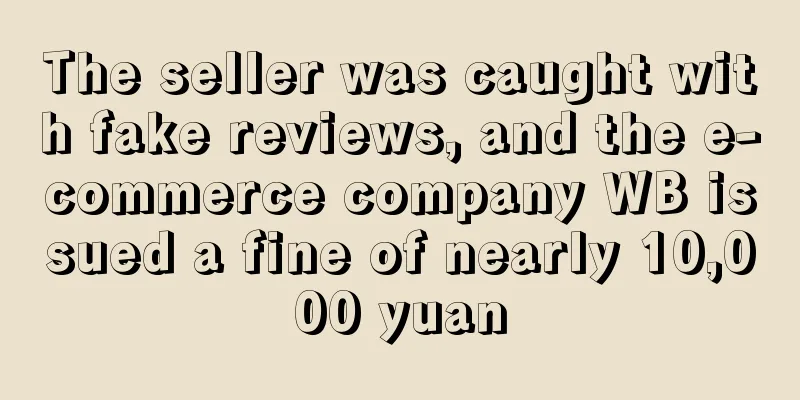The full-hosting model, honey or poison for Chinese sellers?

|
In 1776, Adam Smith, the founder and pioneer of classical economics, revealed the most core secret of productivity and national wealth growth in human society in his famous work "The Wealth of Nations": "specialization and division of labor". “The greatest increase in the productive powers of labour, and the greater dexterity, skill, and judgment with which it is employed, seem to have been produced by the division of labour.” —The Wealth of Nations, Chapter 1 The concept of division of labor proposed by Adam Smith is also applicable to explaining many phenomena in today's modern business world. In the domestic or overseas e-commerce industry, the lively live broadcast rooms, prosperous goods on the shelves, and bizarre strategic gameplay we see are all based on the professional division of labor mechanism in a business ecosystem composed of different individuals and enterprises. "Let professionals do professional things." In the past few months, Chinese cross-border e-commerce platforms, such as Temu, SHEIN, and AliExpress, have successively promoted the full-hosting model, which may become a major trend in the cross-border e-commerce industry. The TikTok e-commerce team has also launched a "full-hosting" model project code-named "S" (short for Store). Under the new project, the TikTok team redistributes the responsibilities and division of labor between merchants and platforms: merchants are only responsible for supply, and the platform solves traffic and operation problems. So, what is the logic behind the full-hosting model that major e-commerce platforms have bet on? Temu has been making great success overseas with its "full trusteeship" model since its launch, and this centralized purchasing model itself is a business model that is engraved in Pinduoduo's genes. The ultimate cost-effectiveness is only the appearance of Pinduoduo. The business system and ecology that support the ultimate cost-effectiveness are the core reasons for its success. Huang Zheng's basic logic is that the demand side is the bull's nose that drives the supply-side reform. By using the ultimate cost-effectiveness that benefits consumers, sufficient stable and large-scale deterministic demand is gathered, and then the traffic is concentrated to support manufacturers. Sufficient demand scale and demand stability allow the back-end supply side to reduce costs sufficiently. Lower costs bring higher cost-effectiveness, and can attract more price-sensitive people, further amplifying the scale effect on the supply side. Self-reinforcing positive feedback is formed! From the growth path of TEMU after its launch, we can also see that TEMU and SHEIN or other independent station sellers who sell hot products have the same strategy. The product selection buyer team collects demand information of popular overseas products, transmits the demand information of the latest popular products to manufacturers, attracts overseas consumers with jaw-dropping low prices, and combines with massive advertising to quickly attract users. TEMU is responsible for most of the operations in the entire chain, while Chinese sellers only need to supply the goods. The "full trusteeship" model did not come out of nowhere. The C2M (Customer-to-Manufactory) concept in our country follows the same logic by pulling the industrial chain in reverse through the demand side. Similar models also exist in the overseas e-commerce industry. Amazon's self-operated model, which is regarded as a troublemaker by Chinese sellers, and Brandless, which was once very popular but eventually left the market, both rely on the core of scale effect to achieve the ultimate cost-effectiveness. In the context of high traffic costs and customer acquisition costs in overseas markets, TEMU has invested massive amounts of real money to quickly increase its volume since its cold start, and then used sufficient demand scale to put reverse pressure on the supply side, further strengthening its ultimate cost-effectiveness advantage. Whose cake is TEMU grabbing? Most Chinese cross-border e-commerce sellers make money by using the Chinese supply chain to arbitrage overseas. They use their own understanding of overseas e-commerce platforms, or their experience in operating independent sites through traffic channels such as Google and META to more accurately recommend products from domestic factories or domestic suppliers to overseas consumers. In the professional division of labor in the traditional cross-border e-commerce industry chain, factory-type and industrial and trade-integrated merchants have weak e-commerce genes and lack platform and traffic channel operation experience. Most factory-type sellers will not be able to adapt to the local environment when entering the cross-border e-commerce industry, and cross-border e-commerce sellers naturally become an indispensable link in this chain. Let professionals do professional things! Cross-border e-commerce sellers make professional money. What is different about TEMU’s “full hosting” model? TEMU directly replaces the work done by these middlemen in the cross-border e-commerce industry. TEMU recruits a more professional operation team, conducts more efficient data mining and product selection and advertising, directly connects to the upstream supply chain, and uses scale to achieve high efficiency and cost advantages in warehousing and logistics. After all, e-commerce business is essentially a game of efficiency, which is also what Pinduoduo is best at. With the same division of labor in the supply chain, TEMU just believes that it can do it more professionally. TEMU relies on nothing more than the advantages of efficiency and volume. It is like a more powerful seller who, through business specialization and informatization, directly connects with the upstream supply side and uses the scale advantage brought by volume to crush those Chinese cross-border e-commerce sellers who do small businesses of buying low and selling high. Have all the independent websites and Amazon sellers who sell white-label products felt the critical blow from TEMU? Whether TEMU can have a bright future remains to be seen. In an environment where traffic costs are high, a huge amount of marketing and promotion investment is required in the early stage to achieve a breakthrough in user scale. When there is no scale advantage, platform subsidies to maintain low prices also require huge investment. TEMU is growing like a gold-eating monster, which is a great test of the depth of Pinduoduo's pocket. Even if TEMU's "full trusteeship" model is a great success, is it a good thing for the Chinese suppliers responsible for supply? The full-service hosting service that looks so beautiful and attractive to Chinese merchants, is it really that attractive? Through the fully managed model, merchants only need to focus on product supply, and other tedious operational work such as logistics, fulfillment and after-sales are all undertaken by the platform. You are responsible for making money to support the family, and I am responsible for being beautiful? Let's take a look at the classic five-force analysis model proposed by strategic guru Michael Porter. Through this model, everyone can understand the logic behind bidding power and how much pie the supply merchants can obtain and share in the TEMU ecosystem. The continuous growth of TEMU means that it can bring larger sales to suppliers, and more factories and suppliers will be attracted and available for TEMU to choose from (there are a large number of factories producing the same products, a large number of potential competitors and substitutes). For Chinese merchants who supply standard products with no significant differences, how many platforms can bring in such huge sales? TEMU has numerous spare parts, but suppliers don't have many choices. It's like Aquaman falling in love, trying to take advantage of the situation! Citing a report by Yien on the story of a TEMU seller, we can see the plight of TEMU suppliers. The gradually powerful TEMU recently launched new price reduction and quality inspection policies, which, while lowering prices to the greatest extent, also require that quality and price go hand in hand, and it also reserves the final right of interpretation for the return of stored goods. Even Li Tianlin, who owns his own factory, still has difficulty balancing low prices and quality. In Li Tianlin's opinion, Temu first let sellers place orders, and after tasting the sweetness, the buyers began to "act" in various ways. First, the sellers were tricked into preparing large quantities of goods, and then the buyers threatened to return the goods, forcing the sellers to participate in low-price promotions. From an industry insider's interpretation of Temu's tactics, we can also see that Temu, with its Neptune characteristics, is very good at casting a wide net and focusing on catching fish. In the early stage, it first recruited investors crazily, and basically all product prices were approved. It obtained a large supply of SKUs and asked merchants to prepare goods in the TEMU warehouse. With a large number of SKUs for traffic testing, after the data came out, products with a little sales volume began to be madly reduced in price. The full-hosting model has lower requirements for merchants. Merchants only need to supply goods, which seems to reduce operating costs and risks, saving merchants a lot of time and energy, and allowing them to be hands-off shopkeepers. The platform takes care of the difficult tasks such as market demand forecasting, quality control, traffic diversion, logistics, and after-sales service. However, this also means that sellers on the supply side have given up their bidding power. When TEMU grows to a certain size, traders and middlemen will inevitably be squeezed out and directly connect with upstream factories; if the sales scale can be larger, TEMU will further squeeze the profits of factories. Because TEMU, with the ultimate cost-effectiveness as its core and only selling point, needs a corps of philanthropists. Next to the growing professional Neptune, Chinese suppliers occupying the less professional end of the chain are bound to be as humble as bootlickers. Therefore, professional division of labor is a double-edged sword. TEMU’s “full trusteeship” model is a very dangerous game for Chinese suppliers. |
<<: The 15,000 yuan trademark was revoked, and the seller finally succeeded in his appeal!
>>: Amazon starts to fight back after "troublemaking" employees were laid off!
Recommend
What is Yuanbo E-commerce? Yuanbo E-commerce Review, Features
Yuanbo E-commerce Service Co., Ltd. was establishe...
What is Doggy Treat Box? Doggy Treat Box Review, Features
Doggy Treat Box is a subscription-based e-commerc...
What is Miva? Miva Review, Features
Miva is dedicated to helping online sellers incre...
What is Trade Republic? Trade Republic Review, Features
Trade Republic is a German internet brokerage tha...
Amazon recalls tens of thousands of mattresses due to self-operated brands
Product recalls are not uncommon, and many of the...
YouTube reports 49% growth in first-quarter ad revenue
In the first quarter of this year, YouTube made $...
Take it off the shelves! The popular "hole shoes" caused infringement, and 21 sellers were sued
When talking about sandals in summer, we must men...
Prepare for a big sales boom! French autumn and winter clothing selection guide is released
Recently, AliExpress released the 2021 French Aut...
What is Merch by Amazon? Merch by Amazon Review, Features
Merch by Amazon is a print on demand (POD) platfor...
Meishan Port Area will be unsealed on August 25 and fully restored on September 1!
Ningbo Zhoushan Port Meishan International Contai...
Regarding the future of overseas brands in 2022, we need to talk about young people on Snapchat
What is the magic of Snapchat that continues to a...
What is Decard? Decard Review, Features
Decard is a Russian payment service provider that ...
Amazon seller successfully defends rights after malicious infringement complaint
According to an Amazon seller, one of his product...
Children's magnet products caused accidents and a Chinese seller was investigated!
Children's products have always been consider...
Search volume exceeds 4.55 million! Amazon's April best-selling list is released
From the seller's perspective, since the begi...









